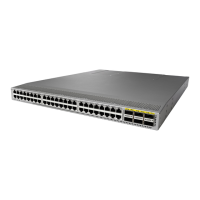Procedure
PurposeCommand or Action
Enters global configuration mode.configure terminal
Example:
Step 1
switch# configure terminal
switch(config)#
Creates an environment variable for EEM.
event manager environment variable-name
variable-value
Step 2
The variable-name can be any case-sensitive,
alphanumeric string up to 29 characters.
Example:
switch(config) # event manager
environment emailto "admin@anyplace.com"
The variable-value can be any quoted
case-sensitive, alphanumeric string up to 39
characters.
Displays information about the configured
environment variables.
(Optional) show event manager environment
{variable-name | all}
Example:
Step 3
switch(config) # show event manager
environment all
Saves the change persistently through reboots
and restarts by copying the running
configuration to the startup configuration.
(Optional) copy running-config startup-config
Example:
switch(config)# copy running-config
startup-config
Step 4
What to do next
Configure a User Policy.
Defining a User Policy Using the CLI
Procedure
PurposeCommand or Action
Enters global configuration mode.configure terminal
Example:
Step 1
switch# configure terminal
switch(config)#
Registers the applet with EEM and enters applet
configuration mode.
event manager applet applet-name
Example:
Step 2
The applet-name can be any case-sensitive,
alphanumeric string up to 29 characters.
switch(config)# event manager applet
monitorShutdown
switch(config-applet)#
Cisco Nexus 3548 Switch NX-OS System Management Configuration Guide, Release 7.x
123
Configuring Embedded Event Manager
Defining a User Policy Using the CLI

